The Image of Public Housing
This work illustrates the current state of the federal public housing program in the United States and explores how small-scale interventions can help reframe how we understand and provide housing assistance in the US.
The Human Condition:
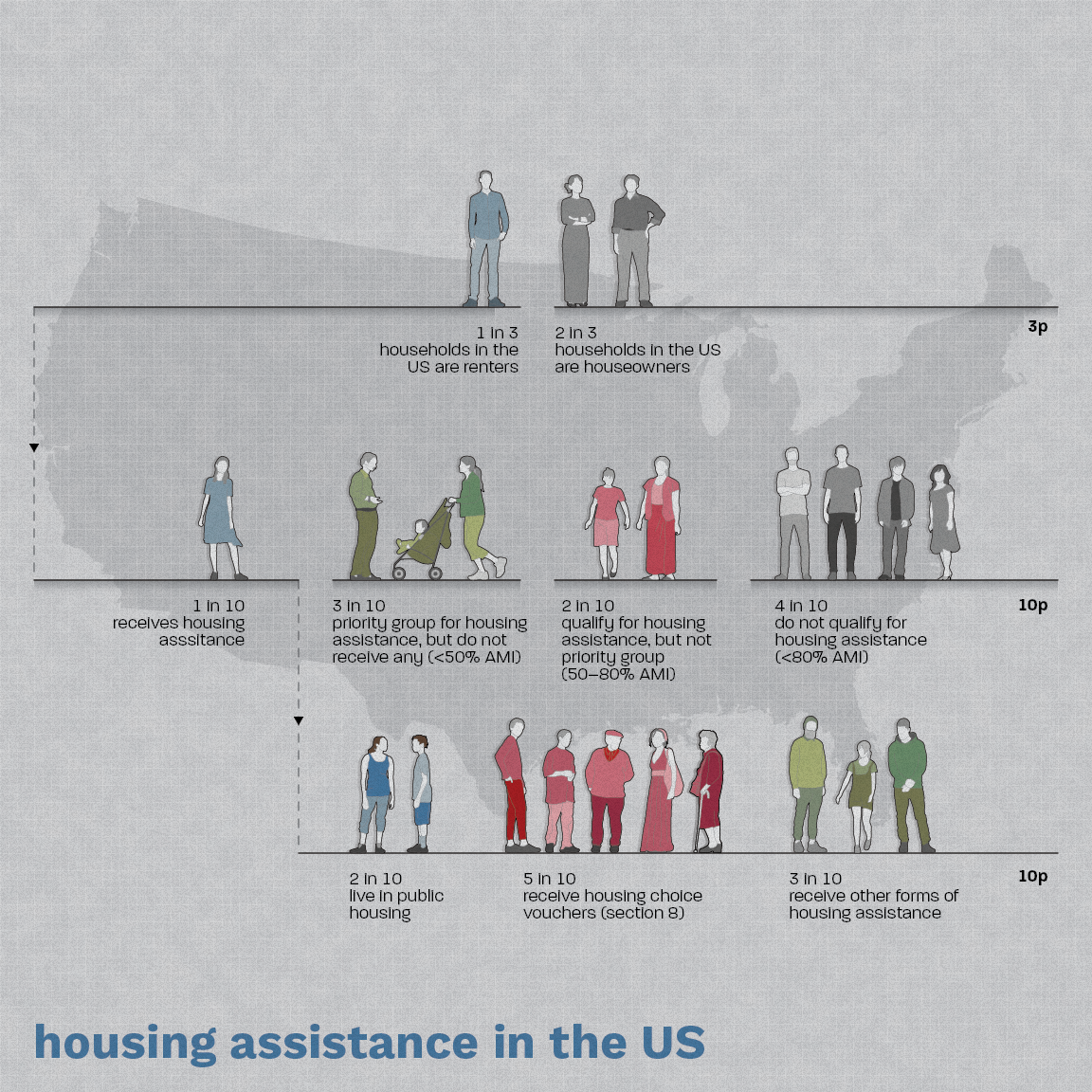
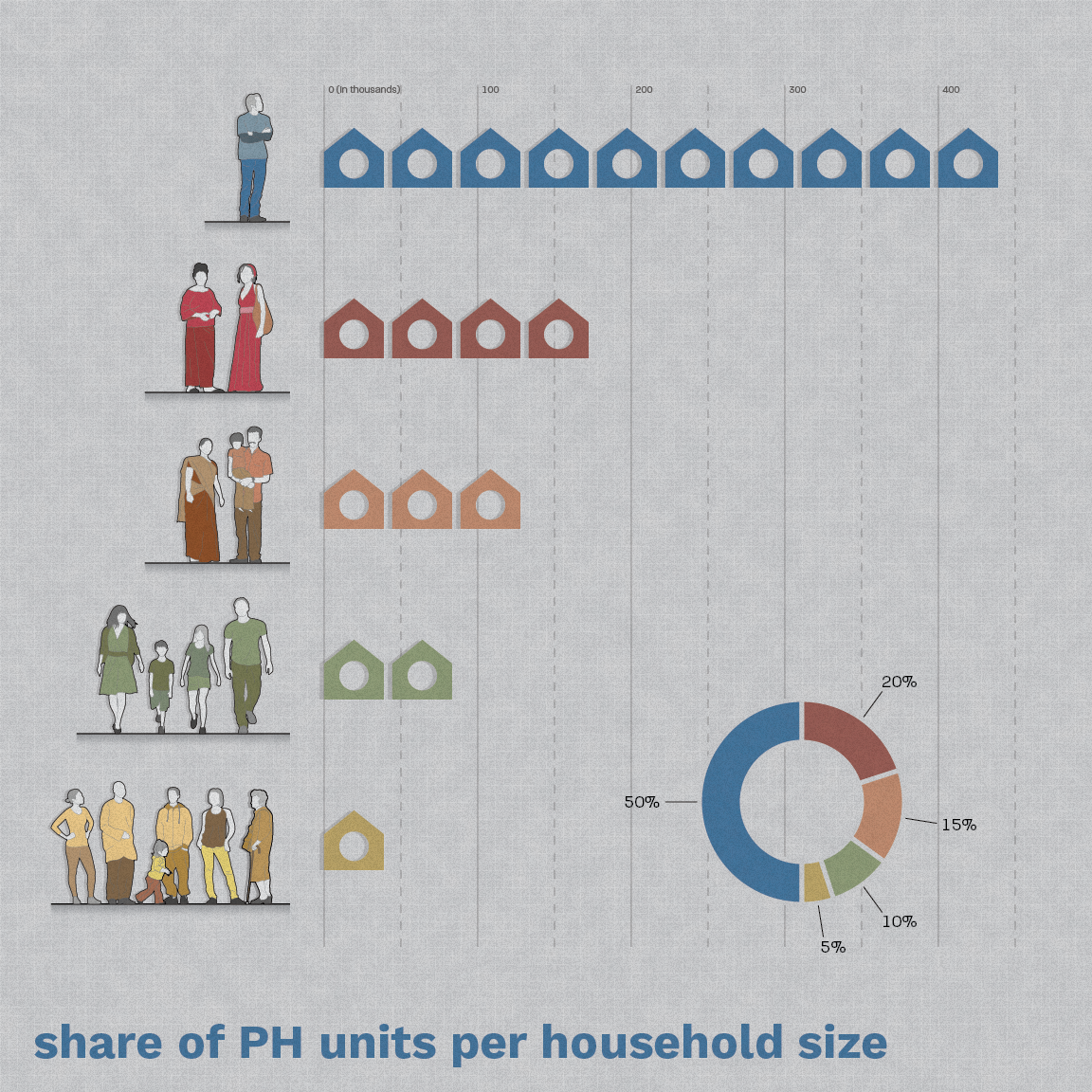
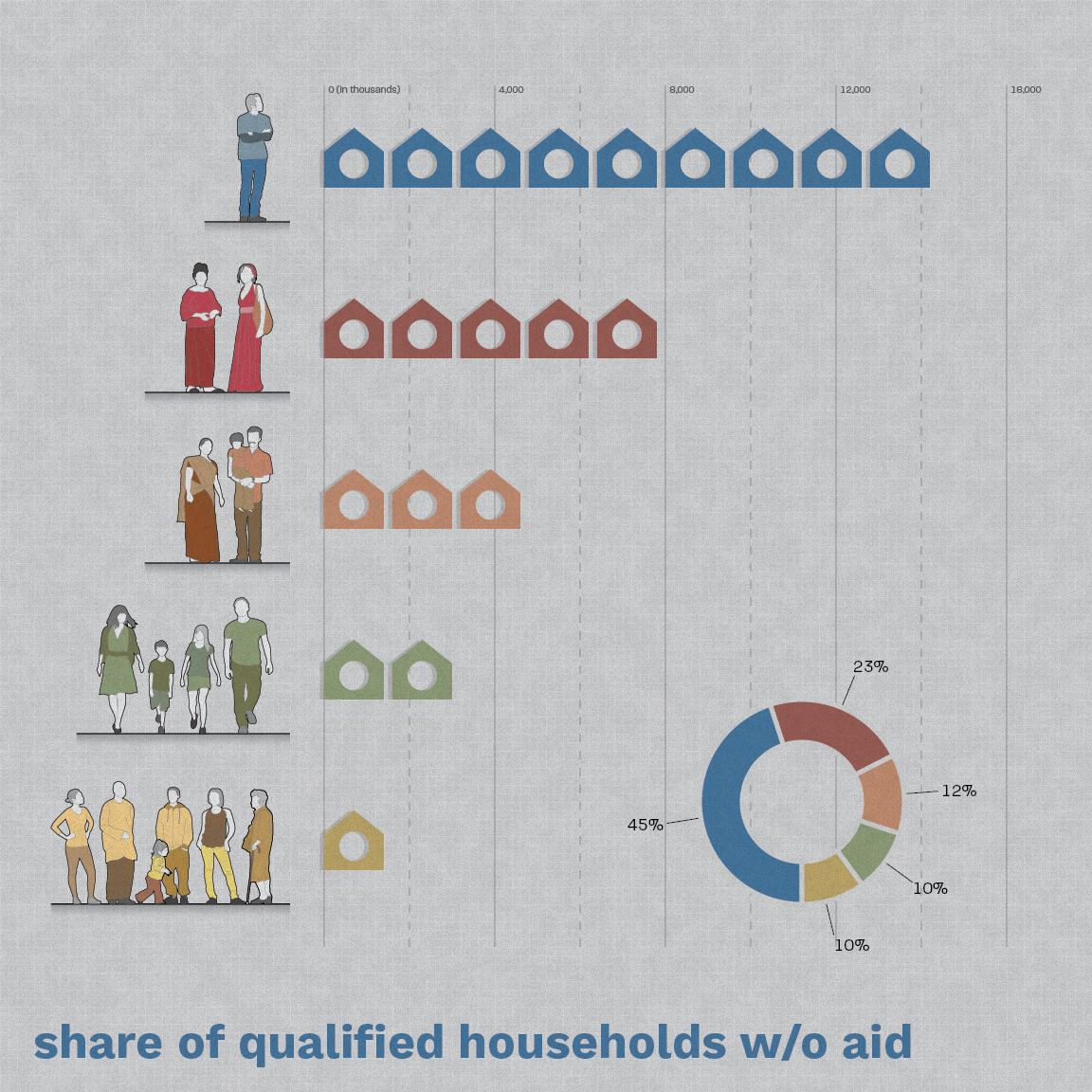
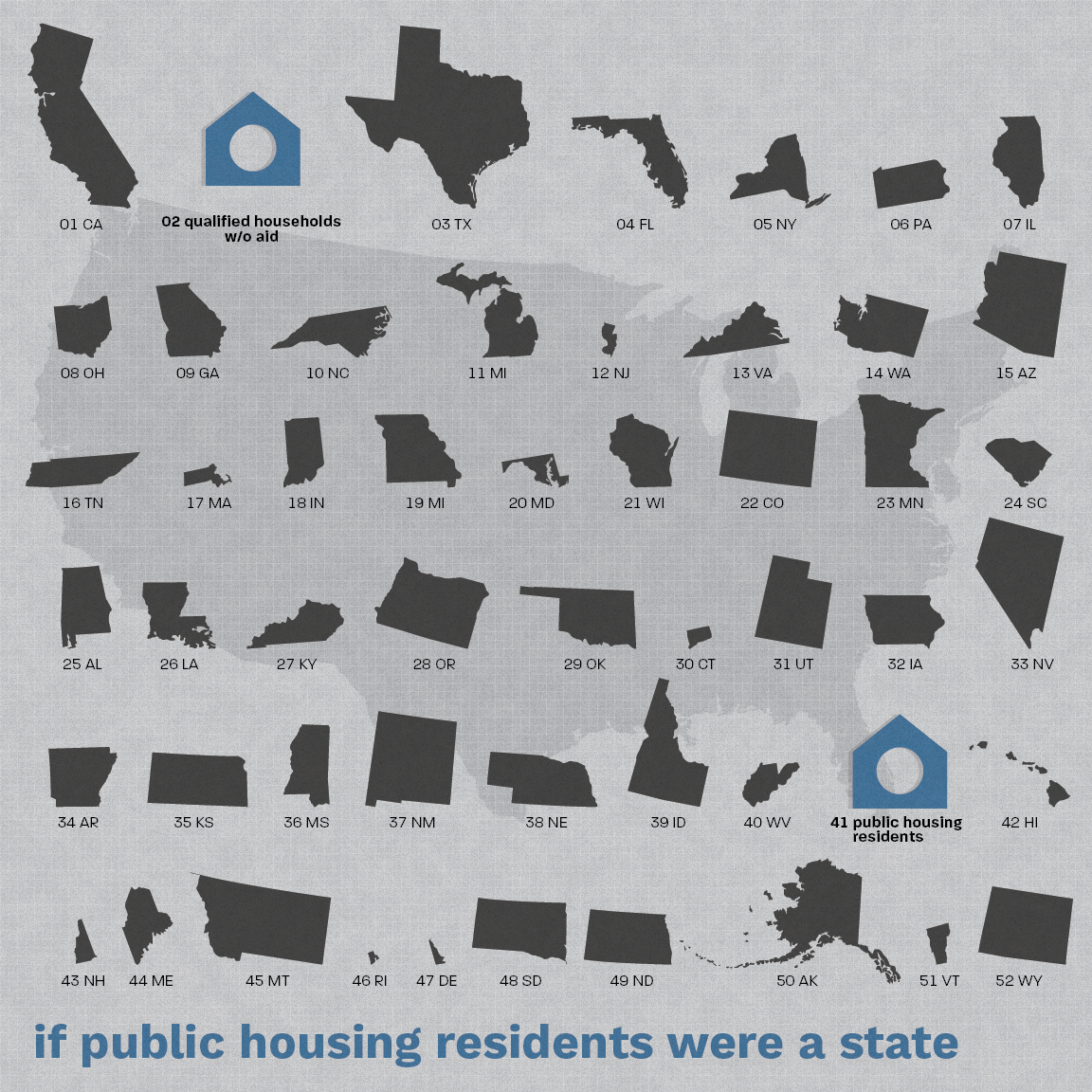
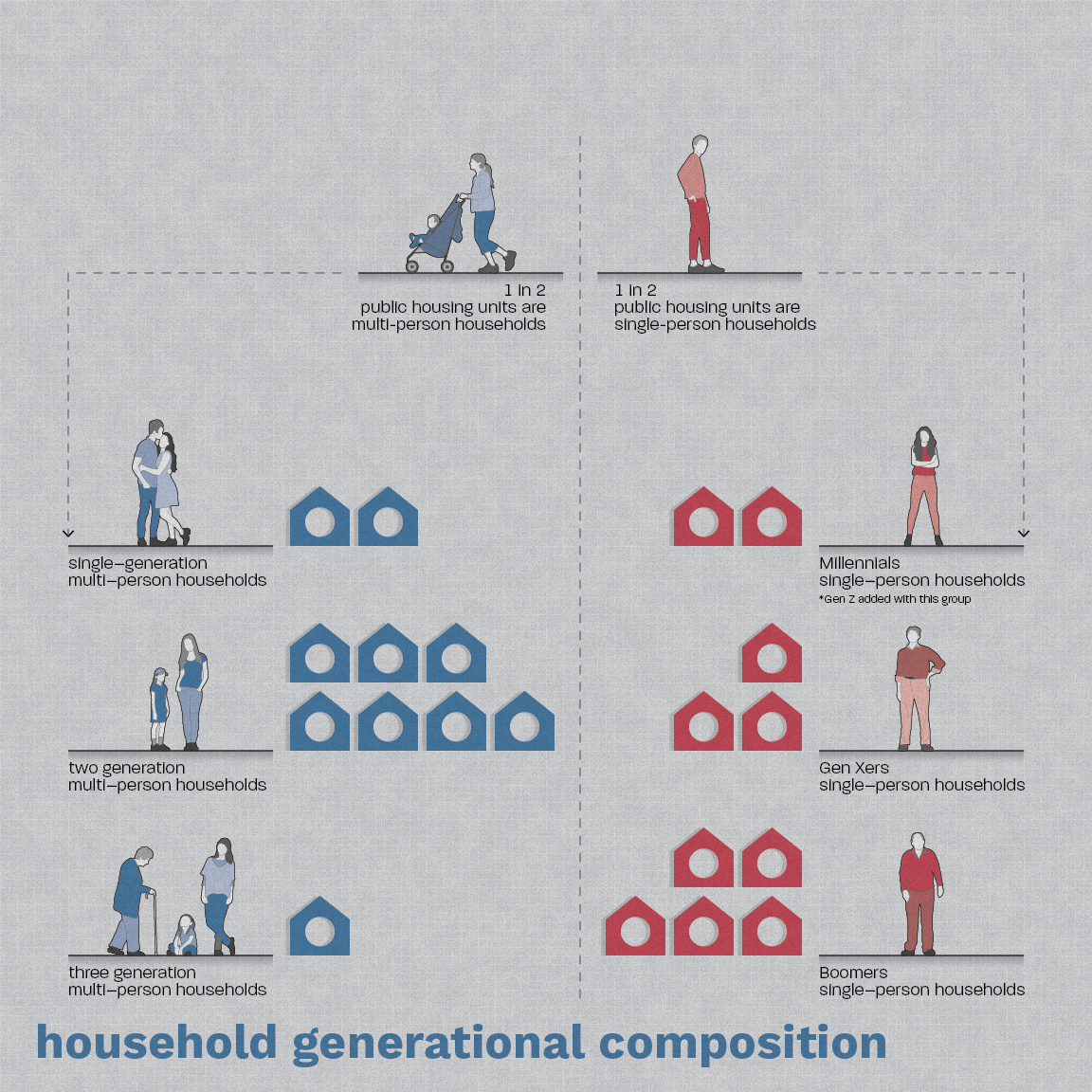
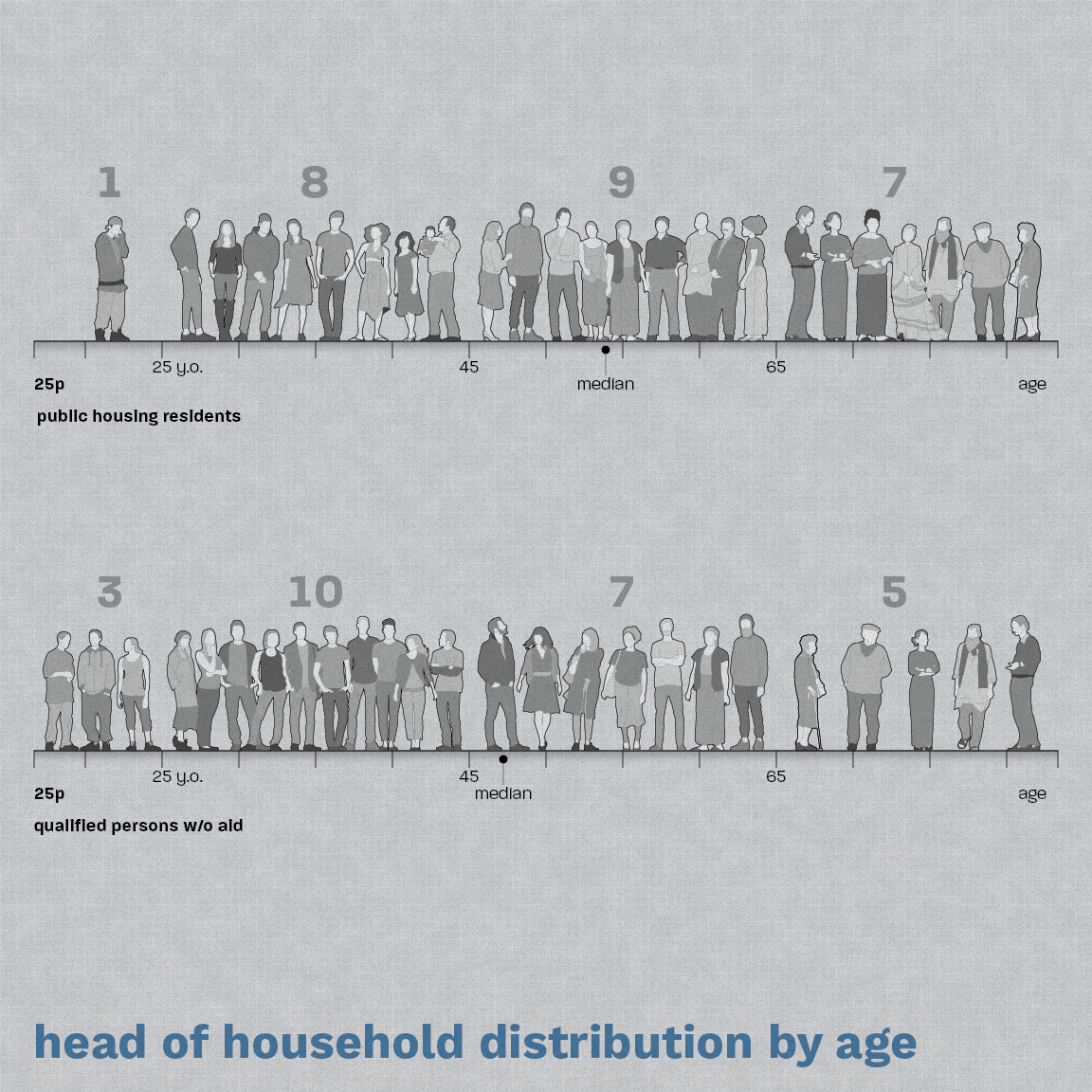
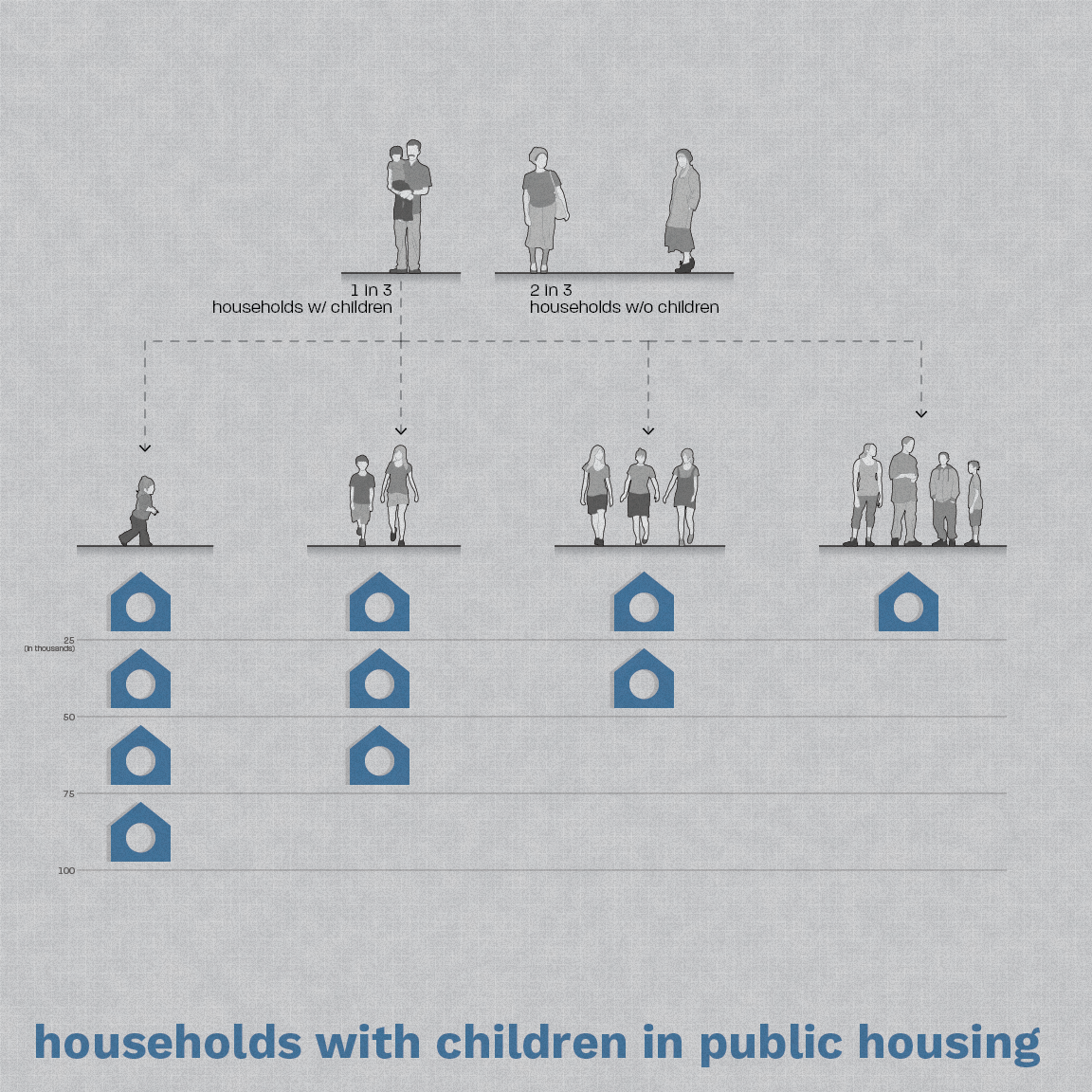
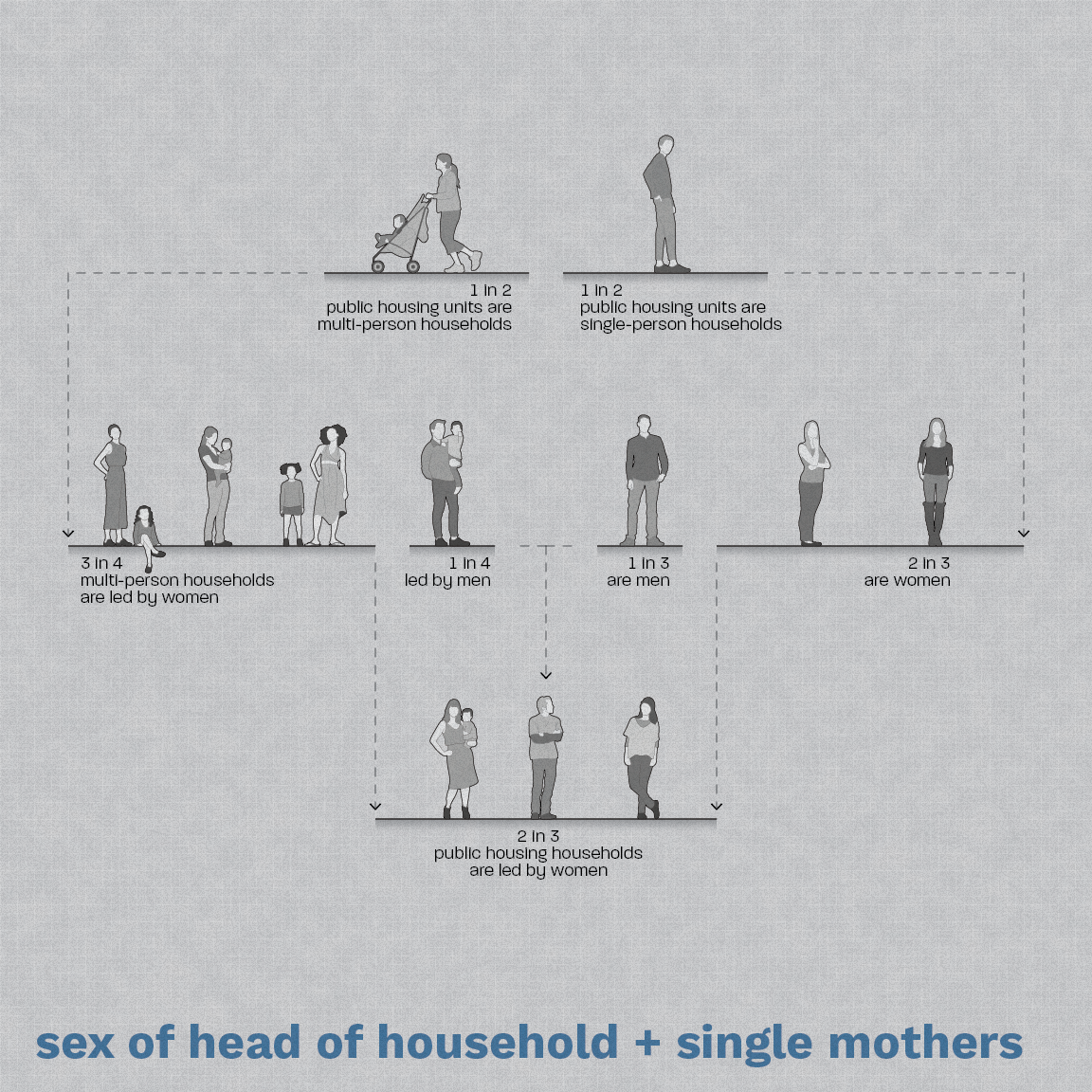
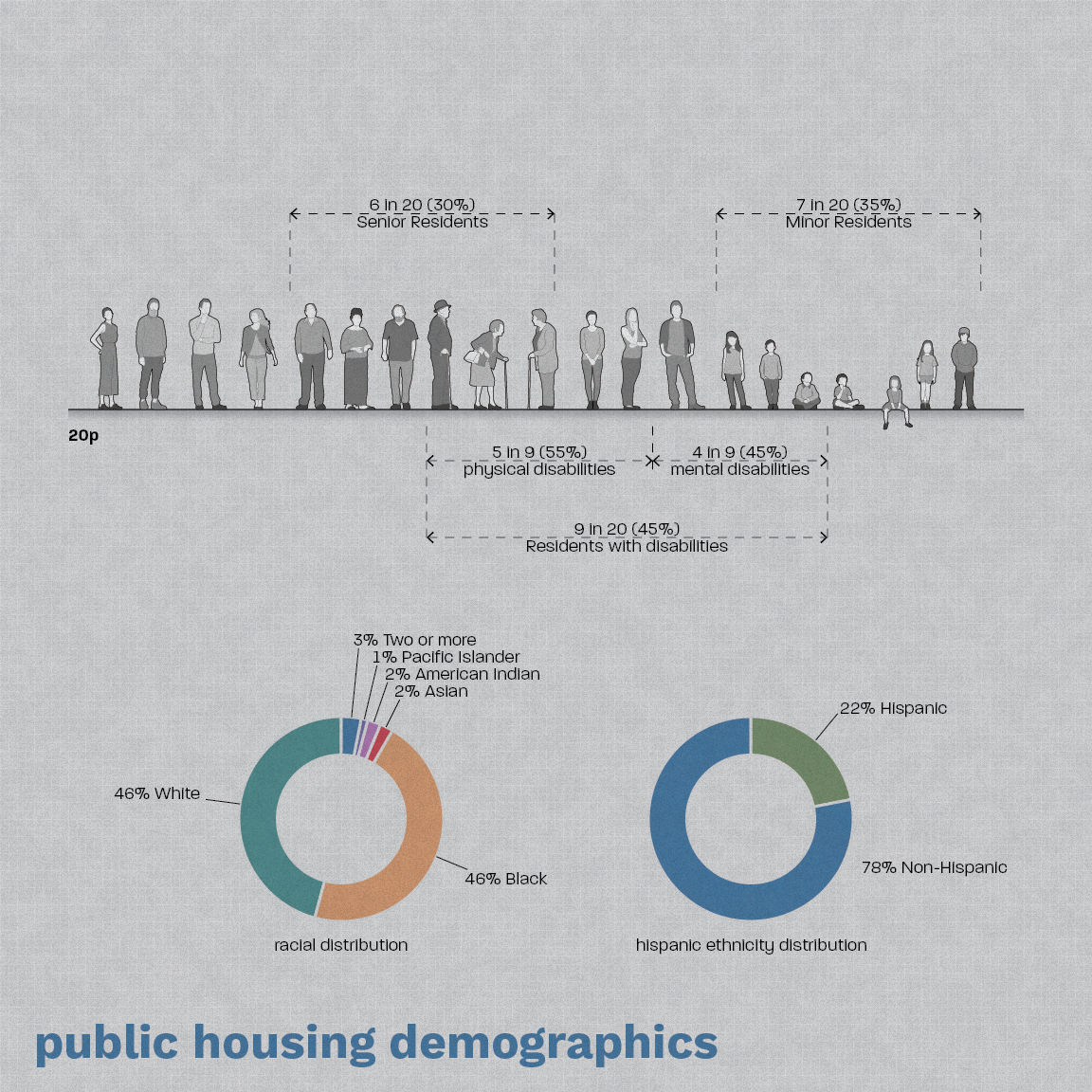
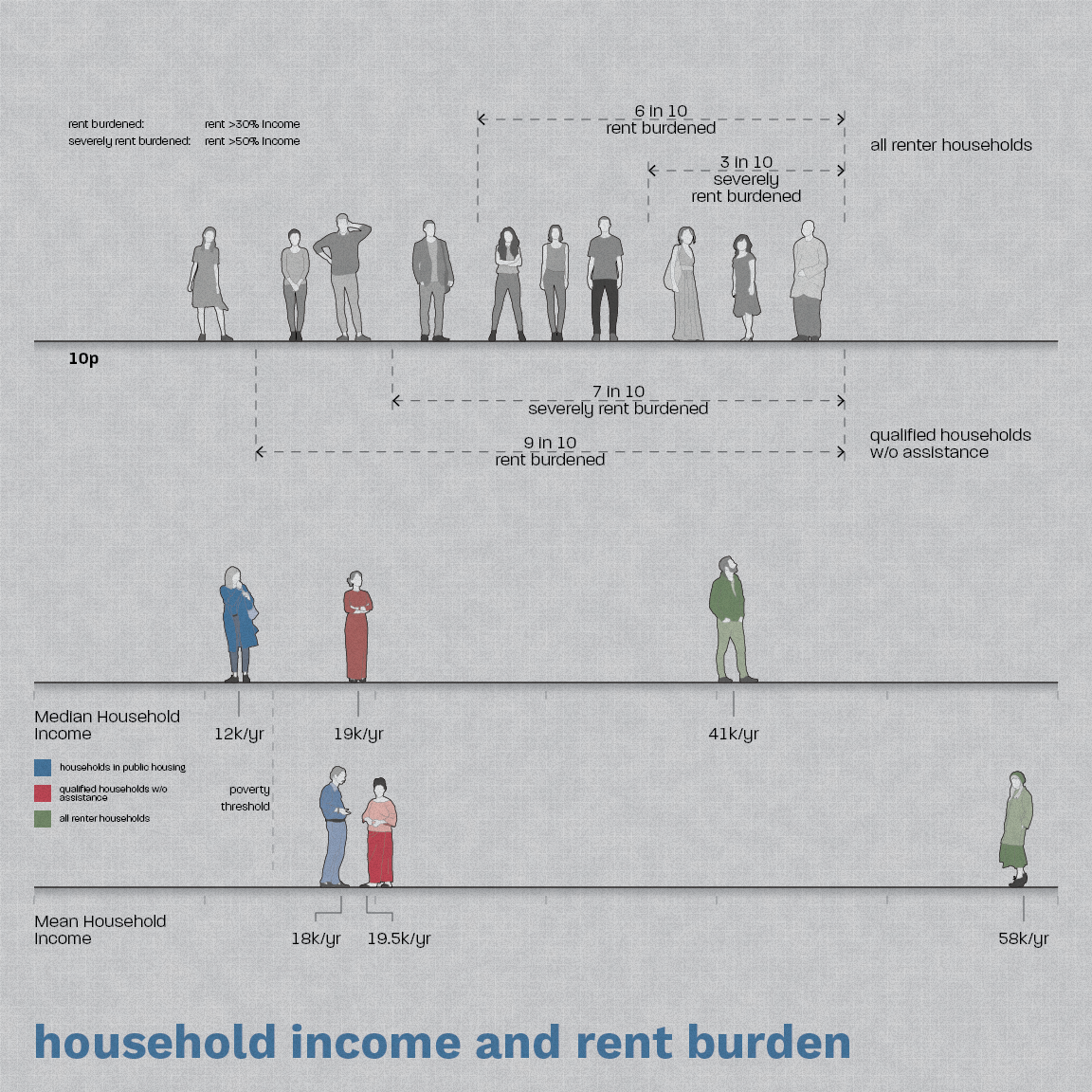
The Spatial Condition:
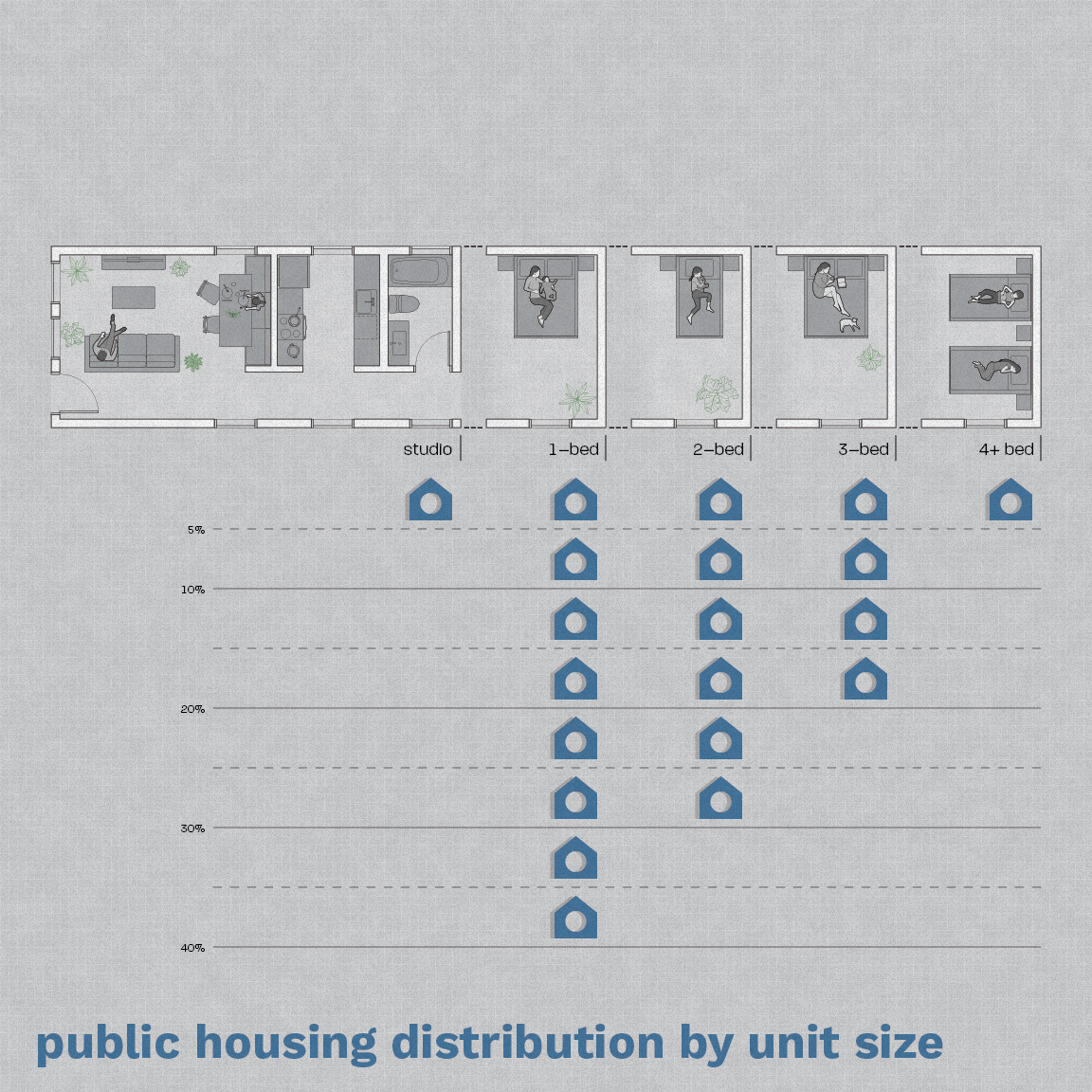
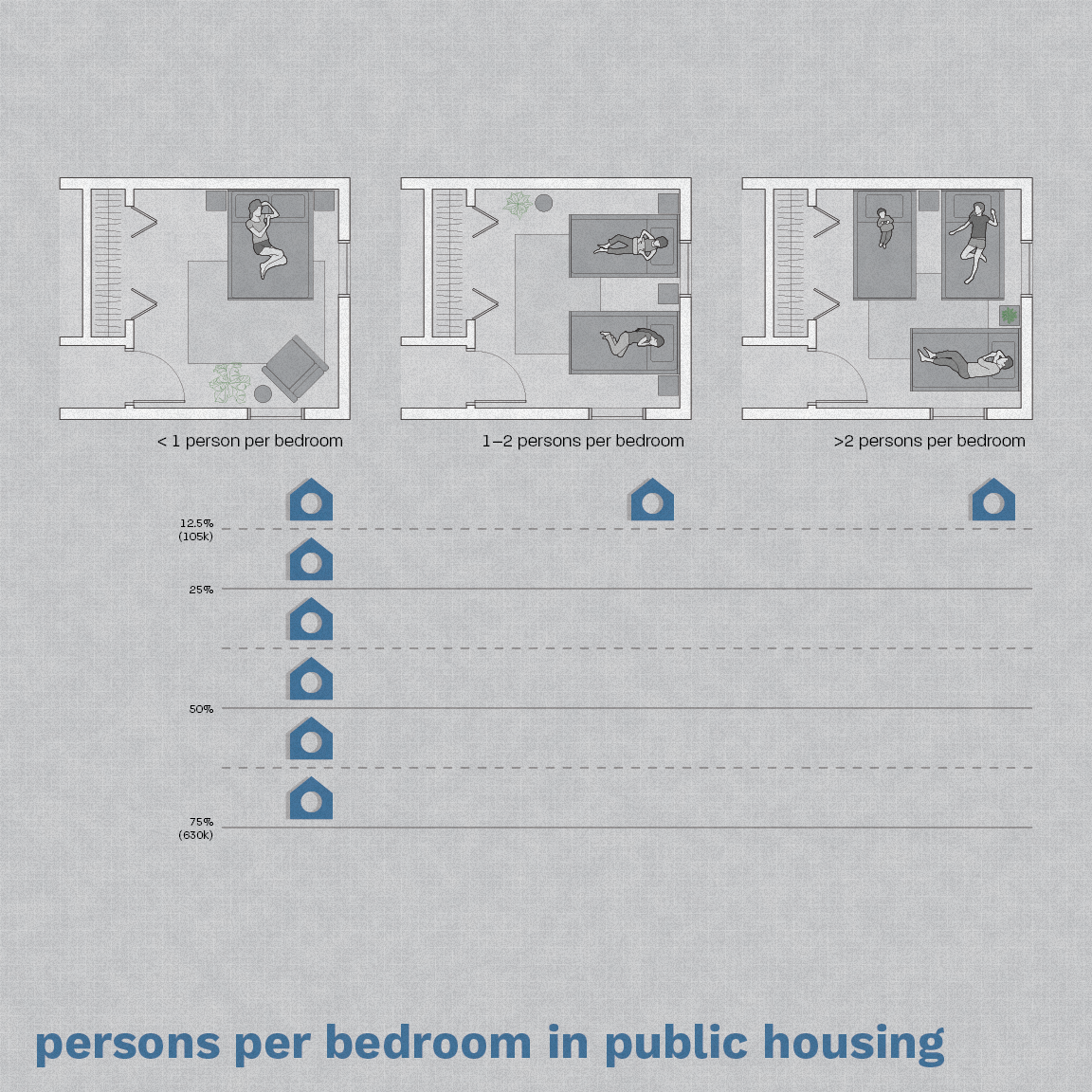
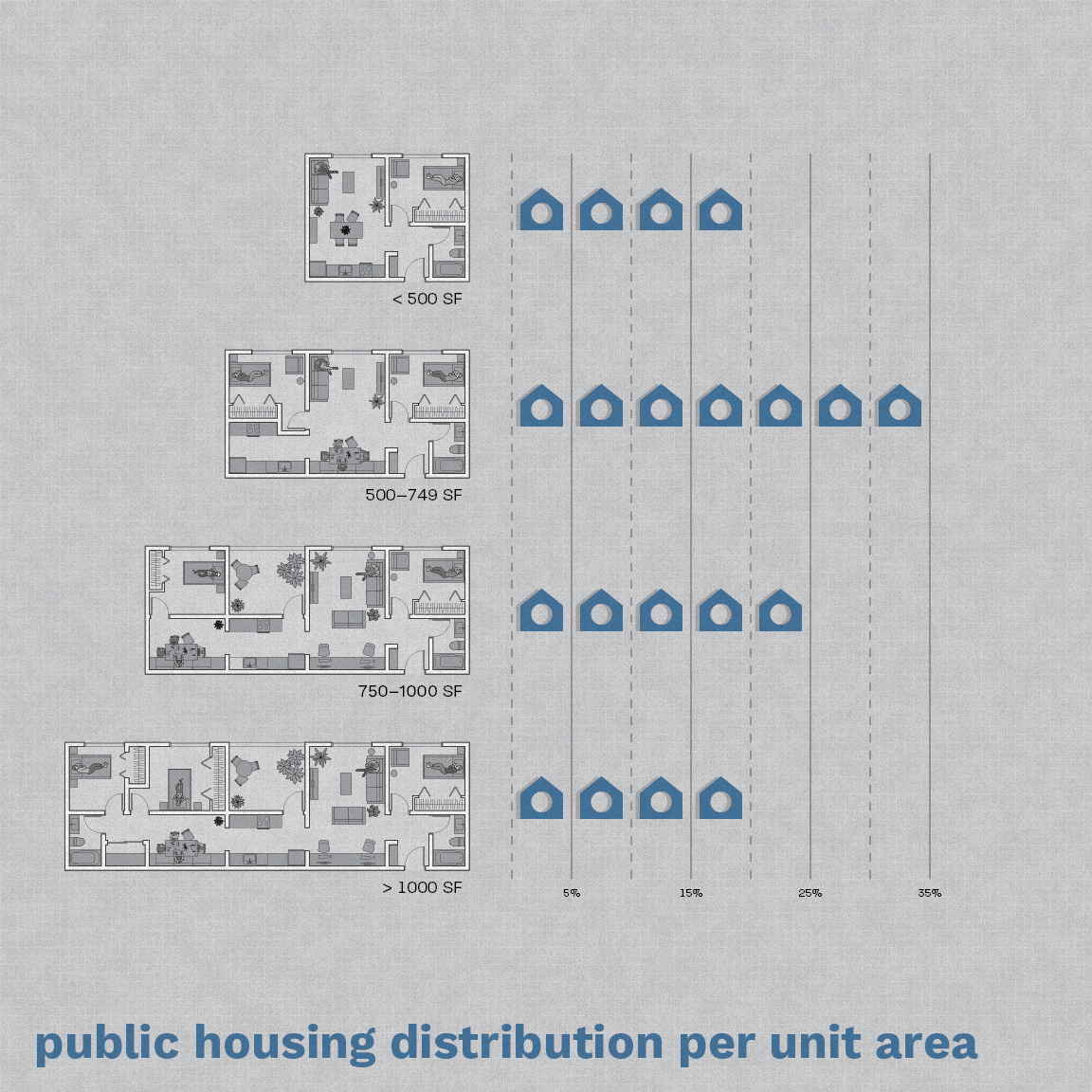
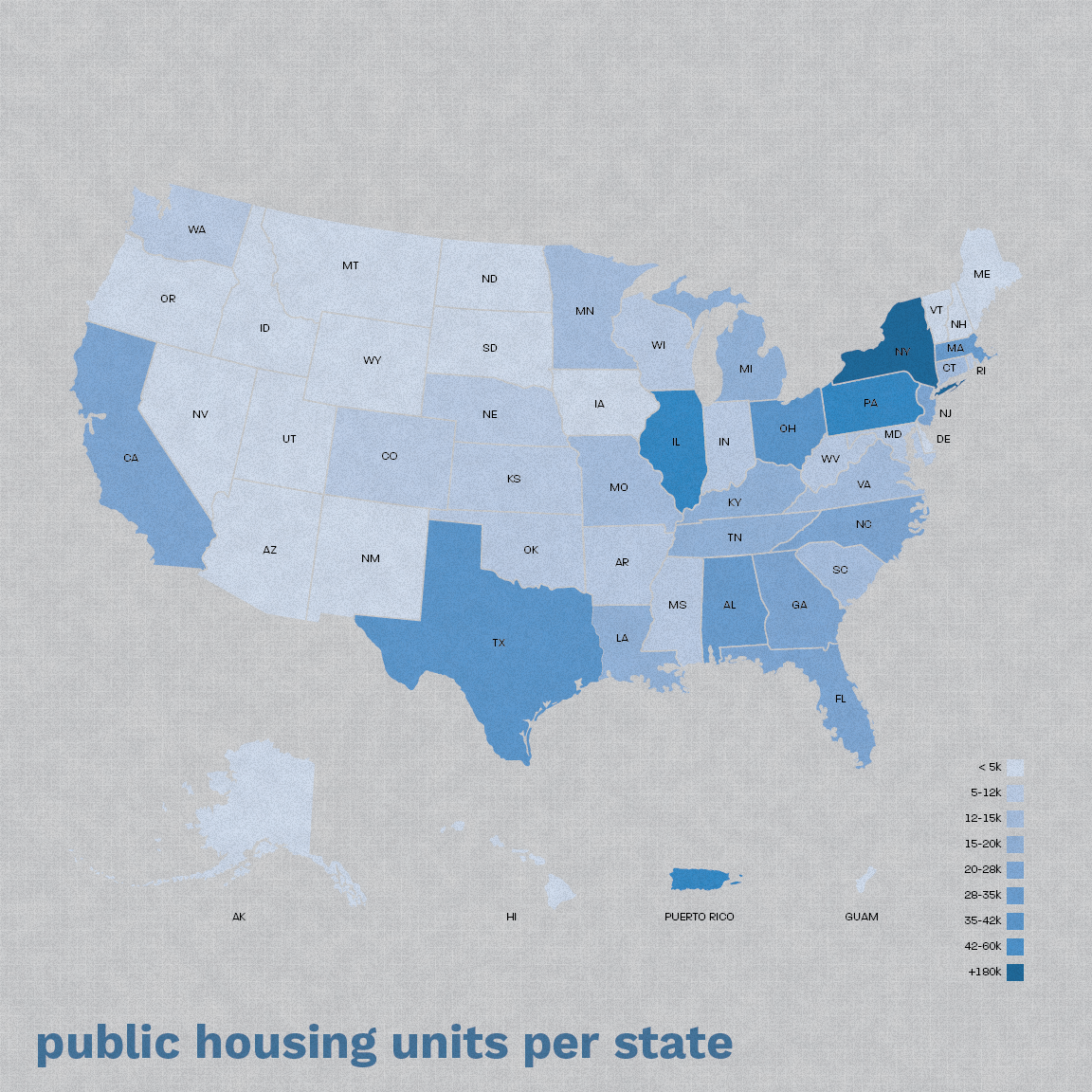
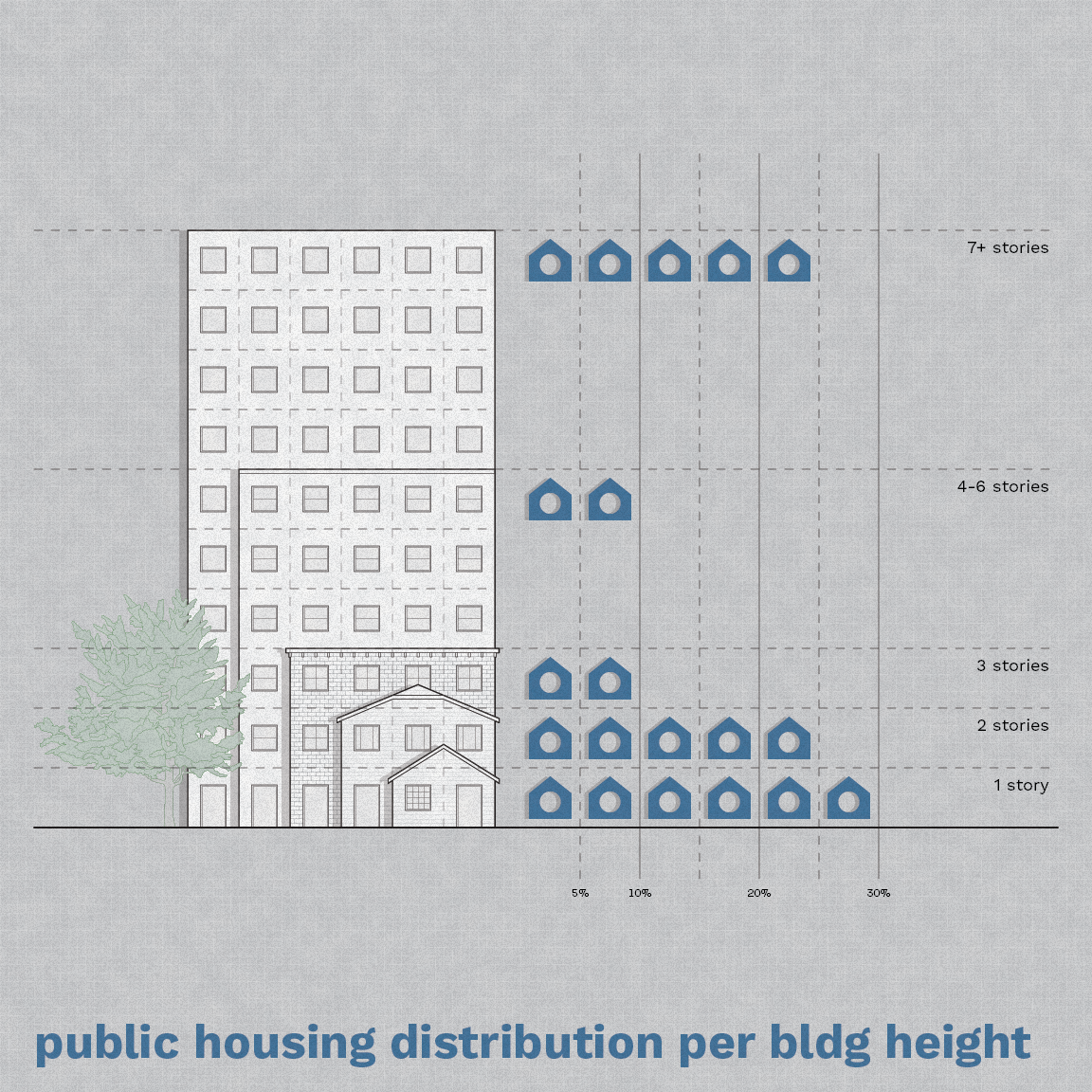
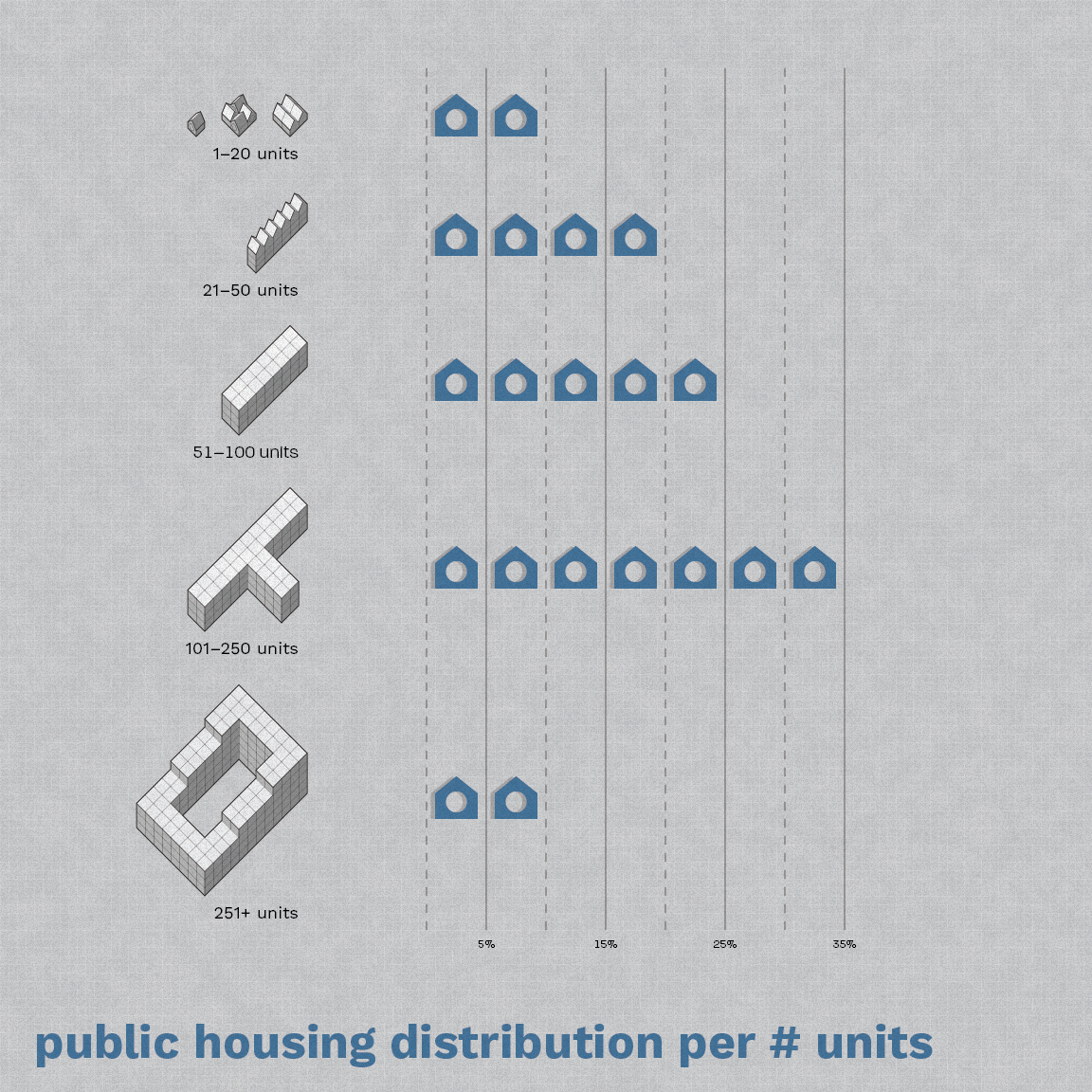
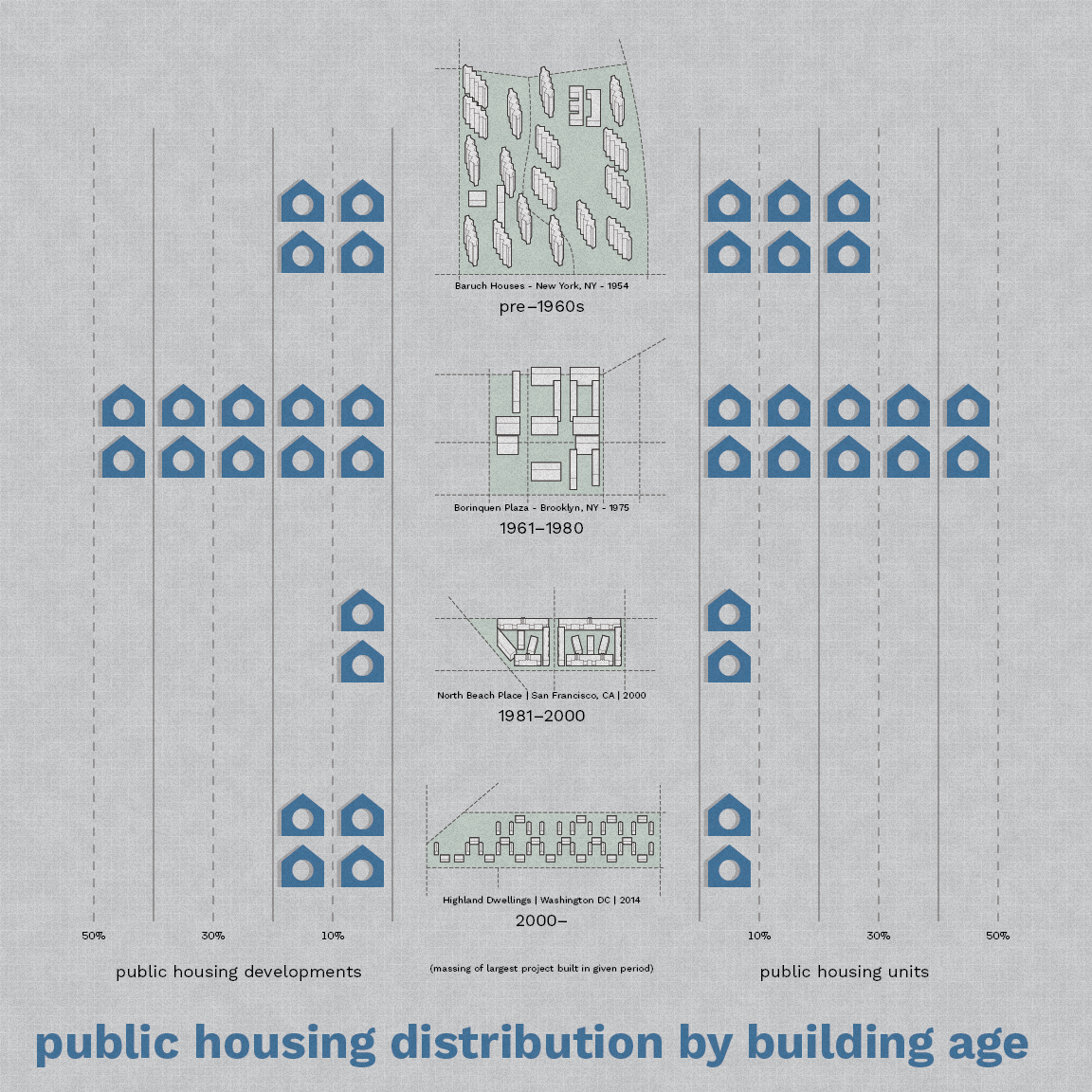
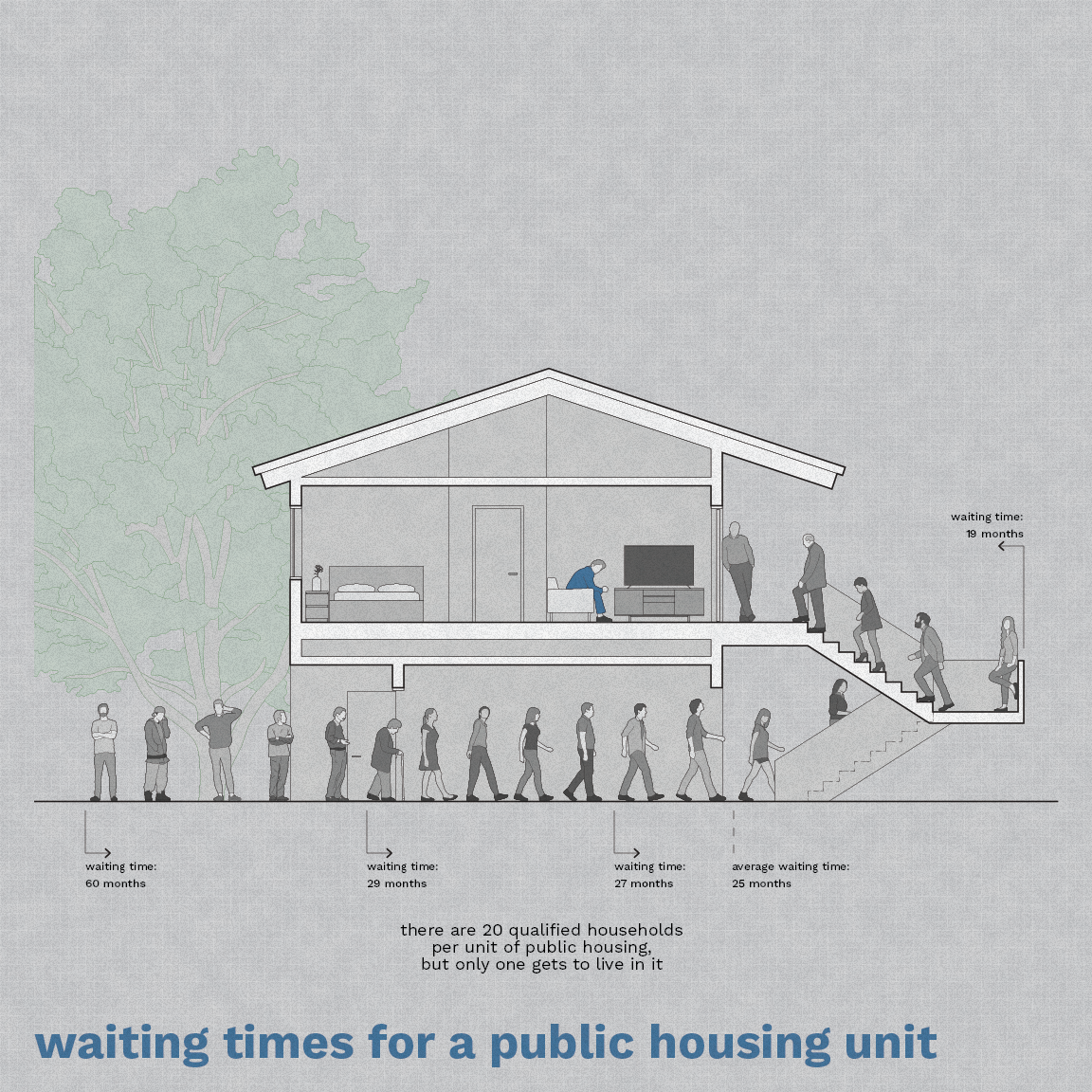
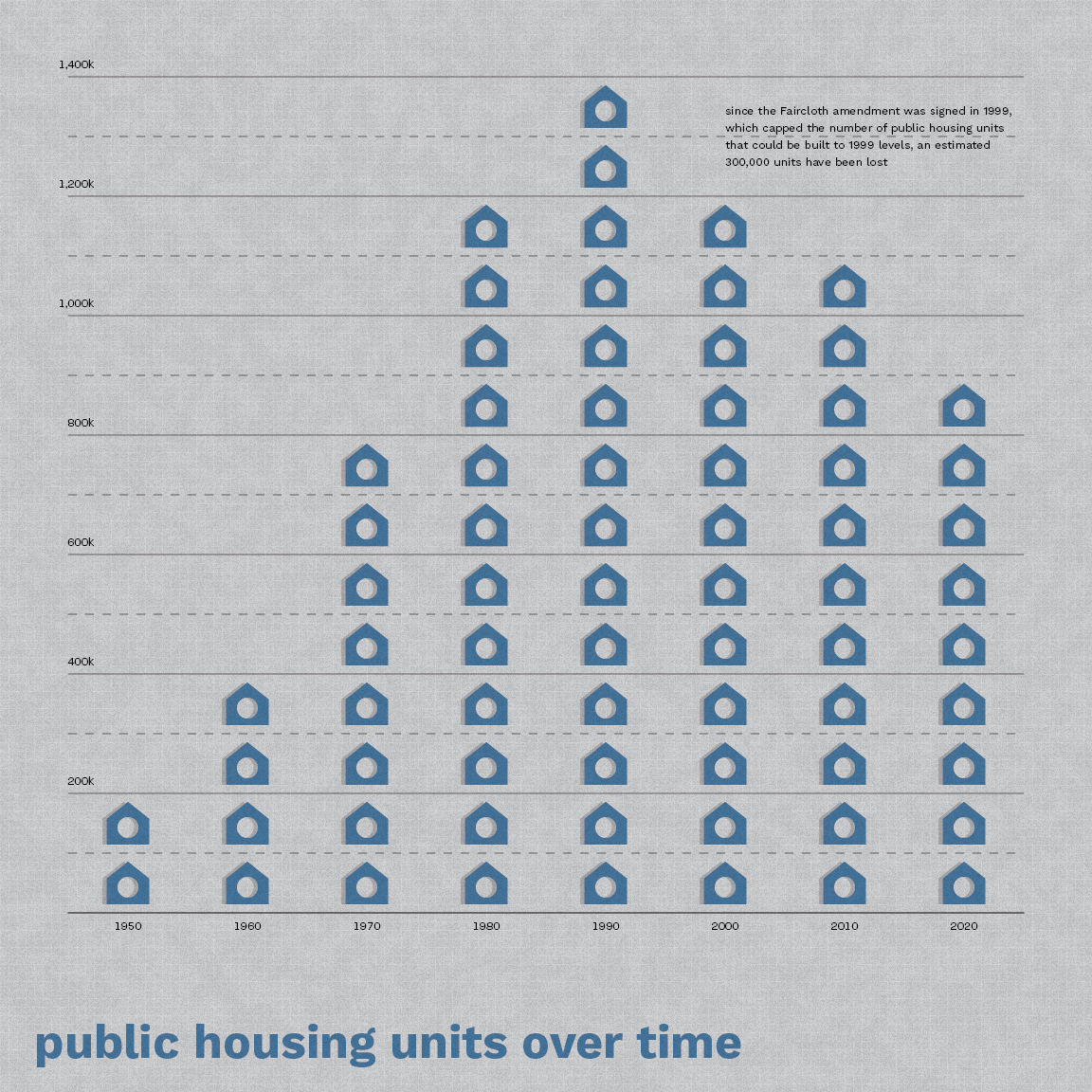
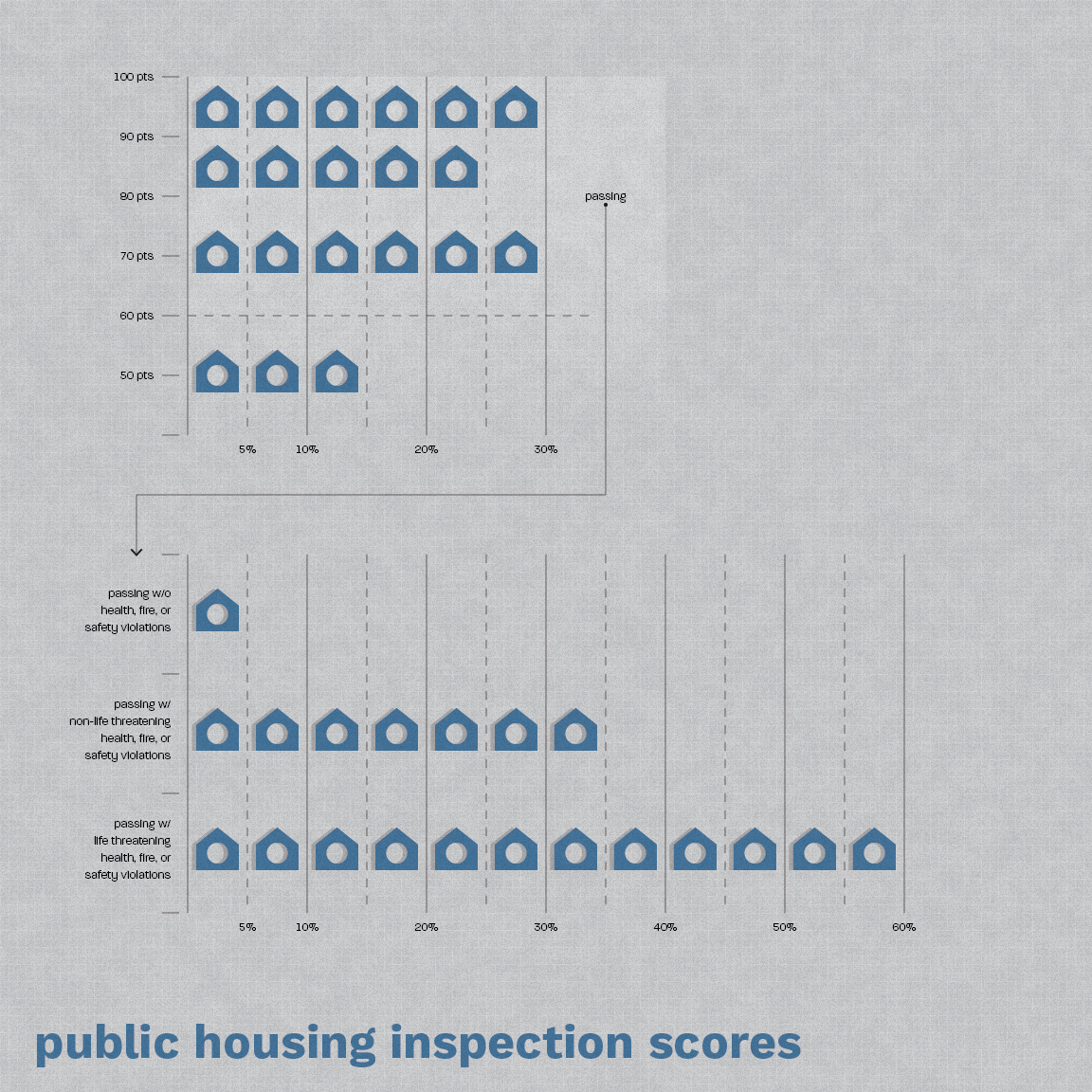
Attaining the American Dream and the homeownership that characterizes it has become increasingly difficult, especially for low-income families. Addressing the housing affordability crisis requires us to look at the most vulnerable sectors of the population to understand how best to provide assistance to those who need it the most. To this end, this section of the exhibition focuses on both the human and the spatial condition of the American public housing program. Its aim is twofold: first, to represent demographic data in a way that would be easier for us to relate to, and second, to illustrate how the architecture of public housing manifests itself in our built environment.
The perception of public housing in the United States is defined by a general apathy and a great deal of misconstrued information about it. This perceived image is critical for understanding how we as a society respond to our own housing needs. Public housing is far more common than you might think, with about 1.6 million residents throughout the country. The program has succeeded in making a positive contribution in quality of life for those who are in it, yet we tend to only hear about the ugly.
By conveying public housing data, this section of the exhibition aims to make sensible the realities of the people who live in public housing. To this end, the data has been carefully sorted and translated into bite-sized statistics that are easy to understand and learn. It is also presented as objectively as possible, without bias towards its residents or its architecture. The graphics combine architectural representation techniques with more traditional data visualization charts and diagrams to provide a compelling and legible narrative. Each panel focuses on one category that offers clues about the quality of life within public housing, and it may show a positive or a negative condition. You as the audience are free to draw your own conclusions.
Public Housing | A federally-subsidized program that provides rental housing for low income individuals and families. It is administered by U.S. Department of Housing and Urban Development (HUD), and operated by local housing authorities (HAs).
Area Median Income (AMI) | The midpoint of the income distribution in a given area. Calculated yearly by HUD, the values are adjusted based on household size and serve as the benchmark for determining eligibility for housing assistance. Eligibility tiers are defined as Extremely Low Income (<30% AMI), Very Low Income (30-50% AMI), and Low Income (50-80% AMI). Public Housing prioritizes households below 50% AMI.
Other Forms of Housing Assistance:
Housing Choice Vouchers (aka. Section 8)
Project-based Housing Assistance (Privately Owned)
State subsidized Housing programs
Sources
U.S. Department of Housing and Urban Development (HUD)
Public Housing Data Dashboard
Picture of Subsidized Households Reports
Real Estate Assessment Center (REAC)
Income Limits (AMI)
U.S. Census Data, 2020
American Housing Survey (2021)
Appendix A. Housing Definitions and Table Index
National Housing Preservation Database
Public and Affordable Housing Research Corporation
Congressional Research Service Reports
U.S. Dept of Health and Human Services. Poverty Guidelines.
National Low Income Housing Coalition
Joint Center for Housing Studies of Harvard University. America’s Rental Housing, 2022
Boston Housing Authority
Boston Mayor’s Office of Housing
Urban Institute

